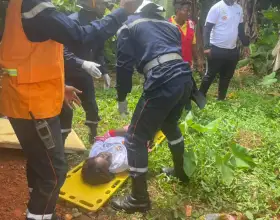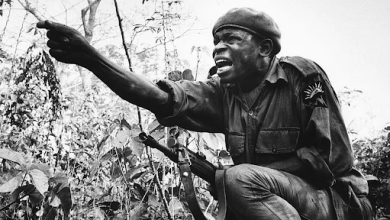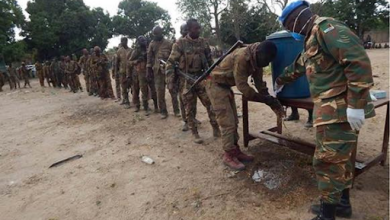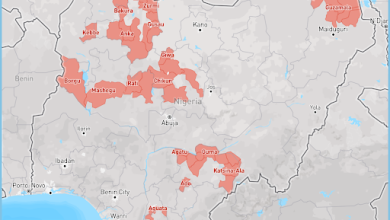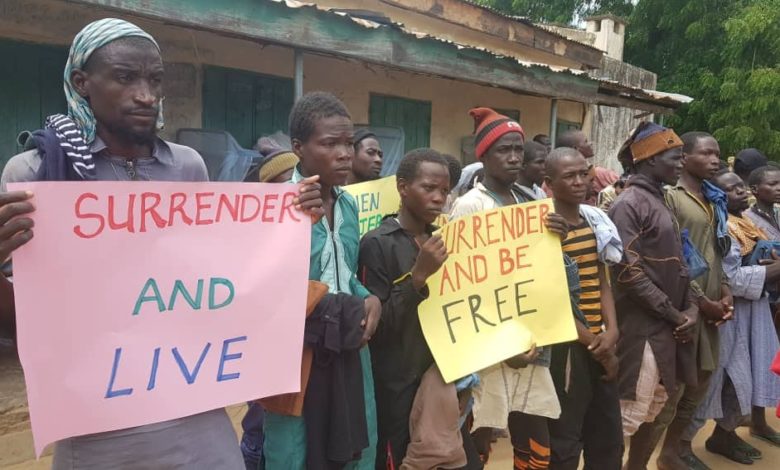
The surrender of hordes of insurgents to state forces in Nigeria is not strange. Similar events were recorded in previous years, even as early as 2014. What makes the recent desertions different, however, is the massive scale.
Starting from mid-July, members of the Jama’tu Ahlis Sunna Lidda’awati wal-Jihad (JAS) faction of Boko Haram fled from their enclaves towards the Konduga, Bama, Gwoza, and Mafa areas of Borno, Northeast Nigeria. Others gave themselves up in the Far North region of neighbouring Cameroon.
As of Aug. 16, the count was 1,500, then it rose to over 5,890 in early September, and more than 8,000 later that month.
More recently, Brigadier General Abdulwahab Eyitayo, the General Officer Commanding (GOC) of the Army’s 7 Division, placed the figure as 11,000, adding that “many more surrenderers are still on their way.” He, however, clarified that not all those venturing out of the insurgent-controlled areas were fighters. Some are farmers, artisans, fishers, or families of the terror group’s members.
JAS vs ISWAP
JAS, the oldest faction of Boko Haram, is the terror group led by Abubakar Shekau until his death in May. He had taken over the reins following the killing of Boko Haram founder Mohammed Yusuf. In 2016, the Islamic State West African Province (ISWAP), a faction recognised by the Islamic State (ISIS) in the Middle East, broke away under the leadership of Abu Mus’ab Al-Barnawi.
Shekau had blown himself up during a confrontation with ISWAP fighters who had invaded his hideout in the Sambisa Forest area.
While many of Shekau’s lieutenants and fighters have since fled to territories controlled by the Nigerian authorities, ISWAP has also absorbed many former JAS members into its ranks. And then there is a third group of Boko Haram militants loyal to Shekau who are still active in the region and are warring against rival ISWAP forces.
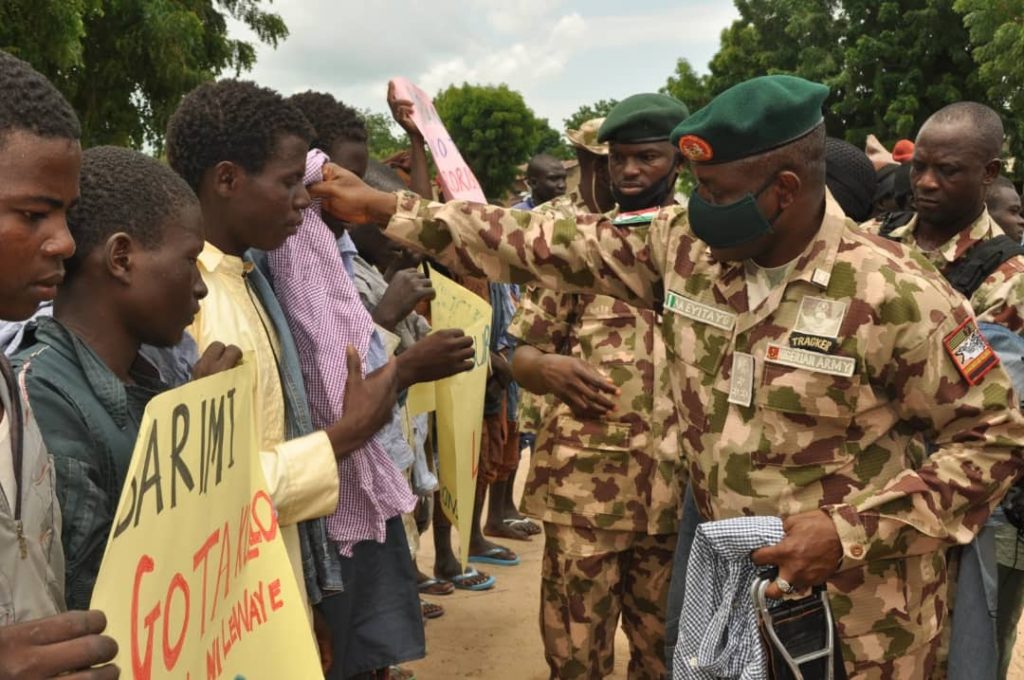
Underestimating the problem?
The figures of surrenders released by the Nigerian military coupled with other developments within the insurgency suggest that the authorities may have previously underestimated the human resources available to the terror group.
A landmark in state propaganda related to the counterinsurgency war, perhaps, was in Dec. 2015 when President Muhammadu Buhari said Nigeria had “technically … won the war.”
As recently as May 2019, former Chief of Army Staff Tukur Buratai claimed, according to reports, that JAS had been defeated and the only terrorist threat was posed by ISWAP. He, however, changed his tune a year later when he said terrorism could persist in Nigeria for the next 20 years.
One expression that has been repeatedly used to describe Boko Haram by the state authorities in recent years is “remnants,” suggesting that most of the insurgents had been killed or arrested.
In Sept. 2019, Buhari said they had been ‘degraded’ and even referred to the insurgents as ‘bandits’ — a term that has oddly been used in reference to terrorism in the Northwest as well. Presidential spokesperson Femi Adesina quoted him as saying “remnants of Boko Haram in the North-east region of the country are bandits, ‘and we will continue to treat them as such.’”
The following year, according to a statement also signed by Adesina, the President commended the armed forces “for their commitment towards eliminating the remnants of Boko Haram terrorists and securing the affected communities.”
The word has been used by military commanders since 2016 and is echoed by journalists. But latest developments suggest it wasn’t an accurate representation of the group’s capacities.
HumAngle asked Army spokesperson, Brigadier General Onyema Nwachukwu, for clarification on what fraction of those who recently surrendered to the authorities were combatants; but we have yet to receive any response.
How big is Boko Haram?
There is no direct information on what Boko Haram’s true strength was before the mass surrenders.
In March 2015, before the split between JAS and ISWAP, Chad’s President Idriss Déby had estimated that the group had up to 20,000 young fighters. Around the same time, United States intelligence officials said the group had up to 6,000 “hardcore” fighters while Amnesty International estimated their number to be at least 15,000, adding that it was likely much higher.
According to 2018 estimates by researchers, however, ISWAP had about 3,500 fighters, compared to Shekau’s 1,000. More recent estimates by the International Crisis Group placed the brackets as 3,500-5,000 and 1,500-2,000 respectively.
The sharp fall in estimates should be largely due to Nigeria’s military operations and those of neighbouring countries in the Lake Chad region. Data gathered by the Nigeria Security Tracker (NST) and analysed by HumAngle suggests that at least 16,913 Boko Haram/ISWAP members were killed between Jan. 2015 and Sept. 2021.
Meanwhile, since dealing a huge blow to the Shekau faction, ISWAP, in its characteristic manner, has started consolidating its grip over the region by whipping up sentiments against Nigerian troops, distributing foodstuff and cash to locals and, according to the Nigerian Army, ‘massively recruiting’ new fighters.
Support Our Journalism
There are millions of ordinary people affected by conflict in Africa whose stories are missing in the mainstream media. HumAngle is determined to tell those challenging and under-reported stories, hoping that the people impacted by these conflicts will find the safety and security they deserve.
To ensure that we continue to provide public service coverage, we have a small favour to ask you. We want you to be part of our journalistic endeavour by contributing a token to us.
Your donation will further promote a robust, free, and independent media.
Donate HereStay Closer To The Stories That Matter

